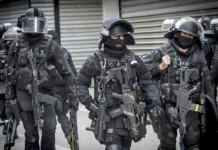We love comparing the merits and limits of various systems. However there is still a tumultuous amount of myth that gets thrown into the fact pile when it comes to a firearm’s properties.
One myth I hear to this very day is that “shorter guns are less accurate.” Not the case. It’s a gross misrepresentative understatement of the more complicated series of influences that govern practical accuracy.
9-Hole Reviews takes on the myth in their practical accuracy drill. They return one of the best performances in the drill’s history. It’s a telling tale on a few points.
- A short barrel is accurate
- Muzzle velocity is what suffers greatest detriment
- Good optics vastly increase a shooters ability to address targets
The reasons a shooter may be less accurate with a shorter carbine are the same reasons a heavier rifle is often more accurate in any given shooters hands than a lighter one. Match guns for service rifle competition are weighted down to 14+lbs, the heavier rifle mitigates excess movement.
Guns with 14.5″ and 16″ barrels usually sport equally advantageous ergos helping to stabilize the shooter/weapon interface. The same factors lending to the perception that long guns are “more accurate” have led to the adoption of the longer freefloat handguards, better stocks, and better triggers.
Accuracy is about reducing the influencing factors that create variances between the shots. Minimize all the other motions and you maximize the repeatable accuracy.
This plays out in the accuracy test. When the short rifle is stabilized its accuracy is on par with longer rifles. The greatest observable difference is in the terminal ballistics. The M193 (55gr ball) has significantly less observable impact on the steel plates. The 20″ barreled M16 produced more energetic hits but the 10.5″ completed the course in 24 rounds compared to the M16’s 25 with ACOG and 21 with iron sights. The iron sight run was also a much slower rate of target engagement.
In short, accuracy is a culmination effort. Shooter skill in specific application combined with the quality of rifle, ammunition, anniclary gear, and physical conditions.



